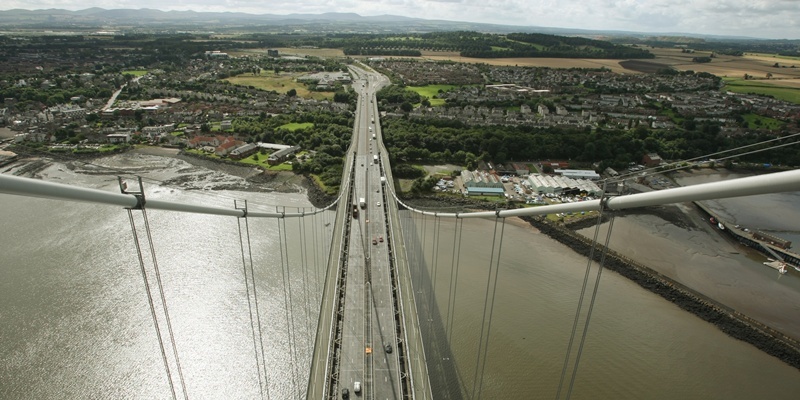Nearly 1,000 heavy-duty bolts on the Forth Road Bridge should be replaced ”as a matter of urgency”.
The Forth Estuary Transport Authority (Feta), which looks after the bridge, is to discuss plans to fast-track the £5 million work to replace 944 heavy-duty bolt assemblies on the 48-year-old bridge with redesigned components.
The situation is sufficiently urgent that normal contractual procedures will not be used and, until it is resolved, Feta can’t rule out emergency repairs having to be carried out at short notice.
Concerns were first raised in 2007 when bridge inspectors discovered a number of cracked nuts on the cable bands holding the vertical hanger ropes to the main suspension cables.
The cracked nuts were replaced and a sum of £530,000 set aside to replace them all using in-house labour. However, further inspections have revealed a further 17 cracked nuts.
Emergency repairs were scheduled over weekend periods and the most critical area on the bridge has already been repaired.
Further replacement of faulty bolt assemblies will be carried out over the next few weeks.
Engineers have now concluded that all of the cable band bolt assemblies should be redesigned and replaced as a matter of urgency at a cost of £5 million.
Transport Scotland will provide £4.15m and the remainder will be met from Feta’s reserves or by rescheduling other work.
Chief engineer and bridgemaster Barry Colford said: ”Until we have replaced all of these bolt assemblies, it is quite possible that further emergency repairs will have to be carried out at short notice, requiring weekend traffic restrictions.
”So far we have been able to limit the disruption this has caused, but this would become increasingly difficult if failures occur during the winter when light and fair weather are in shorter supply.
”That’s why it’s critical that we replace the bolts on the worst affected areas this autumn.”
Mr Colford added: ”I would stress that the bridge remains perfectly safe to use the risk that we are trying to prevent is the need for longer-term lane closures.”
